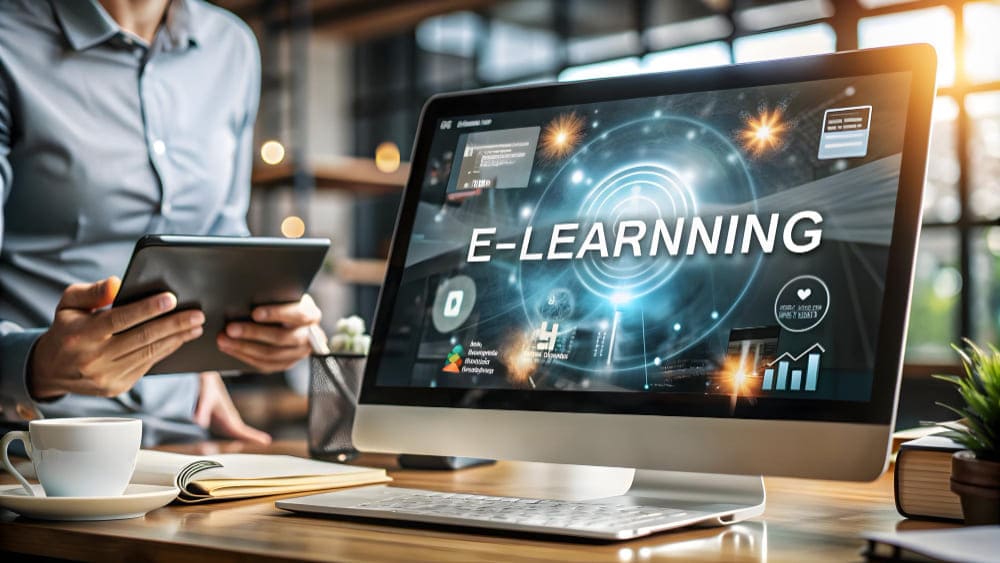E-learning in today’s fast-growing digital atmosphere is part of education, corporate training, and skill development. For organizations wanting to pace with the increasing demands, recognition of the core of eLearning services becomes very critical via remote learning and online professional development programs. This comprehensive guide will go in-depth into the key components, benefits, and factors that contribute to successful eLearning services, enabling you to navigate this dynamic industry and make informed decisions on your training and development needs.
What Are eLearning Services?
eLearning services are a broad range of digital solutions catering to the needs of education and training by electronic means. The services cover schools, universities, businesses, and non-profit organizations serving diverse sectors. The contents provided may be anything from basic educational materials to sophisticated corporate training tailored often for specific learning objectives.
eLearning finds its usage equal to its flexibility, scalability, and ability to provide personalized learning experiences. From self-directed courses and instructor-led training to blended learning approaches, eLearning has become indispensable for leading education and corporate training environments.
Key Components of eLearning Services
The base of effective eLearning services rests on the following key components:
Creation of Content:

Quality, relevant, and captivating content is the essence of any e-learning program. It will be a matter of creating interactive videos, quizzes, simulations, or game modules for the ignition of the learner that leads to results.
Learning Management System:
This provides the very platform on which eLearning courses will be created, shared, and managed, complete with all progress by the learners. A sound LMS will grant ease of deployment of courses, tracking of progress, assessments, and reporting.
Instructional Design:
Instructional design is an orderly process of creating effective and appealing eLearning experiences that meet specific learning objectives. This covers choosing the right technologies, preparation of curriculum materials, and interactivity that enhances learning.
Assessment & Feedback:
Regular assessments are crucial to review the effectiveness of eLearning programs. Feedback mechanisms help learners to understand their progress, where they need improvement, and thus remain motivated.
Mobile Learning:
Seeing that smartphones and tablets increasingly prevailed, mobile learning became part of eLearning services. Courses need to be optimized for all kinds of different devices so that learners can access the content anywhere and at any time.
Benefits of eLearning Services
Cost-effectiveness:

eLearning eliminates the majority of traditional costs involved in face-to-face training, which includes travel costs, accommodation costs, and printing costs. With that in mind, it is quite cost-effective and replicating training on a large scale becomes easier for organizations.
Flexibility and Accessibility:
eLearning enables learners to learn at their own pace and according to their convenience. For professionals, this flexibility works just great as they can balance learning alongside daily life.
Scalability:
Unlike physical classroom setups, eLearning can easily be scaled up for thousands of learners across geographically dispersed locations, thus making it a perfect fit for large organizations.
Personalization:
Most contemporary eLearning services are now capable of offering personalization. Content can be made available to learners as per their specific needs, preferences, and learning pace. Adaptive learning technologies can adjust content based on a learner’s progress and performance.
Measurable Output:
eLearning platforms really integrate detailed analytics and reporting features through which the progress and completion rates of the learners can be tracked against their developing skills, hence making them very useful for the continuous improvement of training programs.
Future of eLearning Services
The future of eLearning services, therefore, seems bright with trends such as AI-powered personalized learning taking a lead in the market, together with immersive technologies like Virtual Reality Augmented Reality, and microlearning. These advancements will further enhance the effectiveness and engagement of eLearning, making it more dynamic and interactive for learners.
Training and eLearning Solutions That Drive Performance

First, any eLearning approach should be more than the distribution of information; it should drive performance. This needs a deep understanding of organizational objectives and training that is aligned to performance outcomes. Simply put, Training and eLearning Solutions That Drive Performance have to ensure that employees are gaining knowledge, but not knowledge for its own sake; rather, apply this knowledge in ways to improve productivity, efficiency, and overall business performance.
Solutions often include performance support tools, continuous learning opportunities, and real-world simulations that will directly translate to improved workplace performance. Training and eLearning Solutions That Drive Performance serves to bridge the gap between learning and application, ensuring that your organization derives measurable ROI from its eLearning initiatives.


